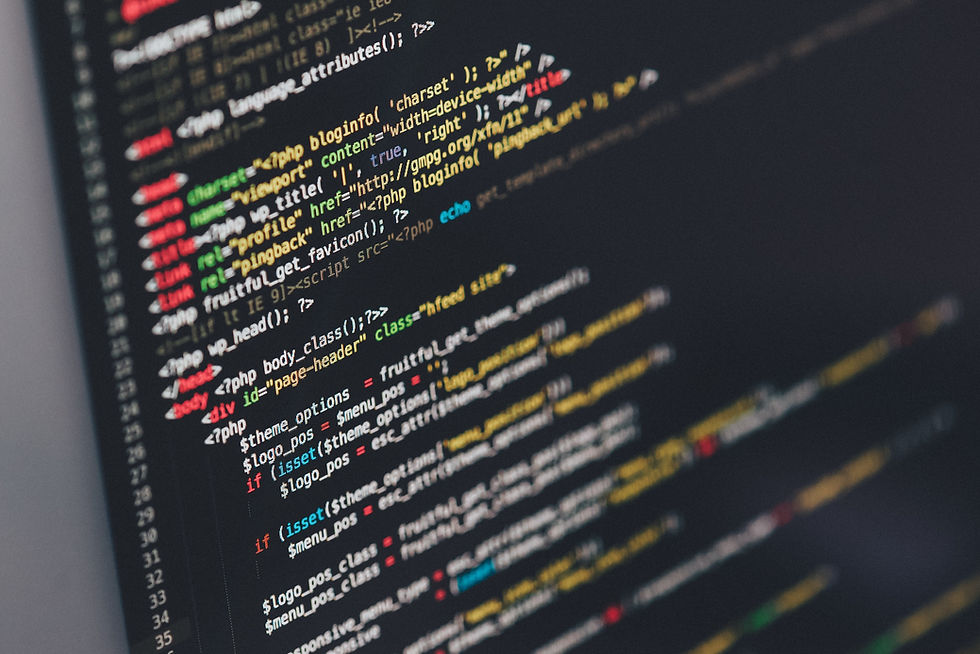The Art and Impact of Clean Code in Software Development
- amol ankit
- Nov 29, 2023
- 4 min read
Introduction
In the dynamic landscape of software development, where agility and innovation reign supreme, clean code is a guiding beacon for developers. Clean code is not merely a set of rules; it's a philosophy, an approach that transforms programming from a technical task into a creative endeavour. This article explores the essence of clean code, its principles, and its profound impact on software quality and longevity. Let's explain this with a story.

Story Begins
Once upon a time, in the bustling kingdom of Softwareland, a group of talented developers lived. Among them was a programmer named John, known for his ingenious solutions but haunted by the chaos of spaghetti code that seemed to weave its way through the kingdom's projects.
One day, as the sun dipped below the horizon, leaving the castle of Codebase in a shadowy glow, the wise elder developer, Mentorius, called upon the developers for a meeting.
"Listen, dear developers," Mentorius began, his voice carrying the weight of years of coding wisdom. "Our Codebase has become a tangled labyrinth. It's time to embark on a quest to bring order to this chaos. The key lies in the ancient art of clean code."
Eager to embark on this noble quest, John and their fellow developers gathered around Mentorius, who began to impart clean code principles—a code that told a story that spoke to all who dared to read it.
Chapter 1: The Quest for Readability
John began their quest with newfound knowledge, understanding that code should be a story anyone could follow. Each line and function should reveal its purpose, like the pages of a well-written novel.
John intentionally named variables as they refactored, transforming cryptic symbols into words that whispered their function. Code comments became footnotes, adding clarity without overshadowing the narrative.
Chapter 2: The Art of Simplicity
In the heart of Softwareland, John encountered the complexity monster, a fearsome creature that had long plagued the kingdom. John battled this beast with the sword of simplicity, refactoring convoluted logic into elegant solutions. The Codebase became a tad bit simpler, a joy for all.
Chapter 3: Modularization and Single Responsibility
In the enchanted forest of Modules, John learned the magic of breaking code into manageable chapters. Each module contributed to the grand story without overwhelming the reader. The once monolithic Codebase transformed into a series of interconnected tales.
Chapter 4: The Consistent Chronicles
John journeyed to the Tower of Consistency, where the Style Sphinx guarded the secrets of uniformity. Armed with formatting guidelines, Alex conquered the Sphinx and returned with the gift of consistency. The Codebase, once a cacophony of styles, now sang in harmony.
Epilogue: A Kingdom Transformed
As John completed their quest, the once chaotic kingdom of Softwareland transformed into a realm of order and elegance. The developers rejoiced, and the users marvelled at the newfound clarity. Mentorius, with a twinkle in their eye, declared, "Clean code is not just a quest; it's a way of life. Carry these principles with you, and may your Codebase be forever enchanting."
The End
The Core Principles of Clean Code in Software Development:
Readability as a Priority: - Clean code prioritizes human readability over machine efficiency. The logic should be transparent, allowing anyone to understand the purpose and functionality of the code.
Expressive and Intention-Revealing Names: - Naming is crucial in clean code. Variable names, functions, and classes should be explicit and reveal their intentions. A well-chosen name can often replace a comment.
Simplicity Over Complexity: - Embracing simplicity is a fundamental tenet of clean code. Unnecessary Complexity introduces confusion and the potential for errors. A clean codebase should be straightforward to understand.
Modularity and Single Responsibility: - Clean code is modular, with each component responsible for a single task. This facilitates code reuse and makes the Codebase more adaptable to change.
Consistent Formatting and Style: - Consistency in code formatting and style is essential for readability. A uniform structure across the Codebase ensures that developers can seamlessly navigate through different parts of the project.
The Impact of Clean Code
Reduced Bugs and Faster Debugging: - Clean code minimizes the chances of introducing bugs and makes debugging more efficient. Clear, well-organized code allows developers to identify and fix issues swiftly.
Enhanced Collaboration: - Clean code is a universal language that fosters Collaboration among team members. Developers can work together seamlessly when code is easy to understand, creating a more productive and harmonious team environment.
Improved Maintainability: - A clean codebase is inherently more maintainable. Updates, enhancements, and bug fixes become more straightforward tasks, reducing the time and effort required for ongoing development.
Adaptability to Change: - Adaptability is critical in the ever-evolving software development landscape. Clean code is more amenable to change, making it easier for developers to respond to shifting requirements and evolving project needs.
Developer Satisfaction and Professionalism: - Crafting clean code is a testament to developers' professionalism and commitment to their craft. Working with clean code enhances job satisfaction and contributes to a positive and fulfilling work environment.
Conclusion:
Clean code is not a luxury but necessary for building sustainable, successful software. As developers, embracing the principles of clean code is an investment in the present and future of a project. It's a commitment to delivering functional solutions and elegant and maintainable ones. So, as you embark on your coding journey, remember the profound impact that clean code can have on the software you create, the entire development process, and the community you collaborate with. Embrace the art of clean code, and watch your software development endeavours reach new heights of excellence.





Nice